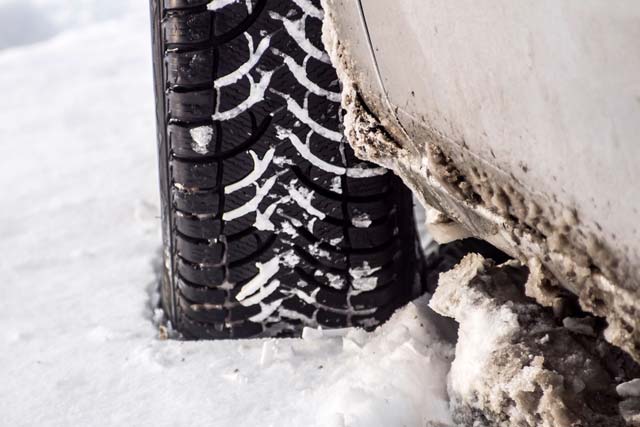
If you’ve lived through a German winter before, you know that good tires are a thing — and therefore, installing weather-appropriate tires will keep your wheels on the road.
Snow tires or all-season tires with the Alpine symbol are required any time snow, icy conditions or low temperatures are present in Germany. Chains are rarely prescribed to those not in the mountains and studded snow tires are only permitted within 50 kilometers of the Alps.
Although all-season tires are adequate for year-round use, snow tires are a safe upgrade during the winter season when snow and ice can make roads dangerous.
There are a couple of drawbacks with owning snow tires — cost and convenience.
COST
Snow tires can be a costly investment, but since the safety of your family rides on having dependable tires, you may want to invest in a good set for the winter season. Snow tires help drivers feel safer on frosty roads, since they are uniquely designed to improve traction in snowy and icy conditions, while all-season tires may not be as effective. With Germany’s unpredictable weather, having winter tires that can negotiate heavy snowfall, black ice and slush may be something worth investing in.
CONVENIENCE
It’s not a good idea to use your snow tires year-round, because the soft rubber compound snow tires are constructed of doesn’t do well in hot temperatures. Therefore, drivers must swap out their winter tires during spring and summer and back again in the winter months. Although switching tires twice a year can be inconvenient, dealing with a car wreck caused by icy roads would be a dangerous inconvenience.
Another thing to consider is Tire Speed Ratings and Load Indexes. For instance, the tire size “P195/60R15 87S” would describe a 195-centimeter tire that has an aspect ratio of 60 percent and a 15-inch wheel, while 87 describes the tire holds 1,200 pounds of vehicle weight. Lastly, the “S” would tell you the tire is capable of driving at 112 miles per hour or 180 kilometers per hour. Tire speeds are rated as L-Y.
Load indexes range from LI 70 at 739 pounds per tire to LI 126, which is 3,748 pounds per tire.
Speed rating is more important, since most of us are not driving heavier vehicles here in Germany.
- L: 75 MPH for light trucks (This means not to drive 100 MPH on the autobahn in your pickup truck.)
- M: 81 MPH — Spare tires
- Q: 99 MPH — Studded or winter tires
- R: 106 MPH — H.D. light truck tires (Normally things like a heavy duty 3500 or 350 trucks)
- S: 112 MPH — Family sedans and vans
- T: 118 MPH — Family sedans and vans
- H: 130 MPH — Sports sedans
- V: 149 MPH — Sports sedans, couples andsports cars
- W: 168 MPH — Exotic sports cars (formerly Z rated)
- Y: 186 MPH — Exotic sports cars (formerly Z rated)
Some people may think installing winter tires is just too much bother for a few months of snow and ice, but using winter tires isn’t an over-the-top precaution — it can be an essential safety measure that could save your life and the lives of others, and is the law in Germany.


